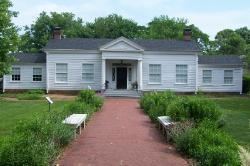Marcus La Rue Harrison William Lewis Cabell 50 approximately 50 approximately Result Union victory | Unknown Unknown Date 18 April 1863 | |
 | ||
Location Fayetteville, Arkansas, United States Combatants Confederate States of America, United States of America, Union Similar American Civil War, Battle of Fort Smith, Battle of Saint Charles, Battle of Whitney's Lane, Battle of Pine Bluff | ||
Battle of fayetteville ar
The Battle of Fayetteville was a skirmish of the American Civil War fought on 18 April 1863 and had an undecided result.
Contents
- Battle of fayetteville ar
- On the air the battle of fayetteville 2016
- The battle
- The aftermath
- References
On the air the battle of fayetteville 2016
The battle
Confederate Brigadier General William L. Cabell departed Ozark, Arkansas with 900 cavalry, intending to retake Fayetteville, Arkansas, which had been occupied by the Union Army after its tactical victory months earlier at the Battle of Prairie Grove. Approaching Fayetteville from the south, Cabell's men captured a nine-man Union picket near West Fork, Arkansas on the night of April 17. The following morning, Cabell lost the element of surprise when his men skirmished with dismounted Union pickets in east Fayetteville. The Confederates climbed East Mountain and Hughey's Arkansas Battery opened fire on the garrison with its artillery. Union Colonel Harrison deployed three companies of the First Arkansas Infantry to counter the threat.
At about 6.00 am, Cabell ordered a charge on the city, hoping to capture the Union commanders at the Tebbetts House, where they made their headquarters. The attackers halted as they waited for their artillery to shell the house into surrendering. Confederate Colonel James Monroe now led a flank attack on the city, managing to take the Baxter House. The Confederates continued into Fayetteville, taking prisoners and destroying a supply train. However, the Union forces finally rallied and halted any further Confederate advances.
Harrison ordered an advance on the Confederate artillery upon East Mountain. Meanwhile, Colonel Monroe led his Confederate cavalry up Dickson Street in one last attempt to capture the Union headquarters. The crossfire was too heavy and Monroe withdrew his men. The Confederate artillery on the mountain was now both under attack and out of ammunition. General Cabell reluctantly ordered his men to fall back and thus the battle ended in a draw. Nevertheless, Cabell had failed in his objective and the Union retained control of Fayetteville.
The aftermath
Casualties reports are missing, but each side is estimated to have had about 50 men killed or wounded. The Tebbets House is now a Civil War museum called the Headquarters House.
